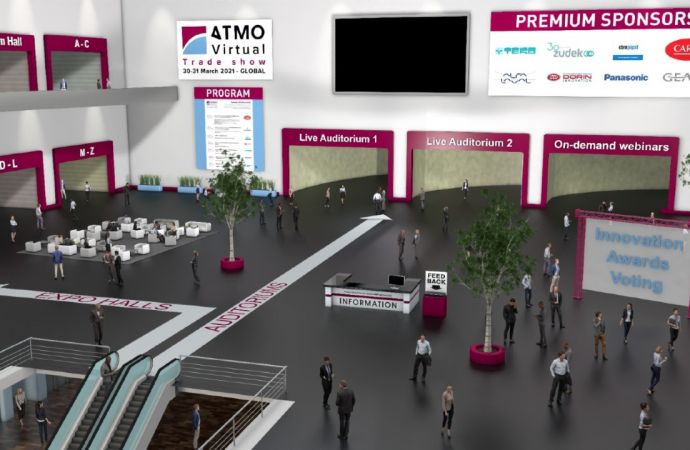At ATMOsphere America 2013, organised in Washington DC, leading ammonia solutions providers Danfoss & CIMCO, Star Refrigeration and Baltimore Aircoil Company presented their latest ammonia solutions for cold storage applications. According to these manufacturers, end users’ interest in ammonia refrigeration is continuously growing in the North American Market, with CO2/ammonia systems and low charge ammonia packages achieving energy savings of up to 20% compared to traditional systems.

In the Second Technology Case Study Session of this year’s ATMOsphere America Conference, leading market players Danfoss & CIMCO introduced their energy and cost efficient ammonia/CO2 refrigeration systems, whilst Star Refrigeration presented its low charge ammonia condensing units. A comparative analysis of air cooled, evaporative and hybrid condensers was also presented by Baltimore Aircoil Company. The manufacturers present all felt a growing interest from end users in ammonia solutions in the North American Market.
Ammonia/CO2 system offers mainstream solution, Danfoss & CIMCO
The cold chain industry is continuously challenged to strike a balance between energy saving, environmental responsibility, equipment & life cycle cost and reliable & consistent temperature control. Danfoss and CIMCO used a case study of an ammonia/CO2 system installed at one of Canadawide’s growing distribution centres to demonstrate that ammonia/CO2 can help strike such a balance, offering a mainstream solution.
In the 5574.2m² warehouse in Montreal, Canada, the original specification was based on a Freon/glycol system. Canadawide found that ammonia/CO2 system actually aligned best with their objectives to keep lowest annual operating and maintenance costs. The designed system uses medium temperature ammonia as the primary refrigerant to cool a single loop of re-circulated CO2. Compared to an NH3/glycol system, the NH3/CO2 system greatly reduces ammonia charge. According to the two companies,"NH3/glycol needs 20 times more pounds of glycol than CO2, so using CO2 dramatically reduces pumping power and electricity consumption". Thanks to the CO2 system, approximate total savings of 20% are achieved over the glycol system. The owner has expressed his complete satisfaction, and is planning on using the same design for his phase two expansion.
Low charge ammonia condensing units available for the US market, Star Refrigeration
Derek Hamilton presented a recent ammonia installation from Star Refrigeration for a food manufacturer's cold storage facility. The low charge ammonia package described in the case study offers lower installation costs, better efficiency and lower operational costs than alternative HFC solutions. The freezer installed is an air-cooled ammonia condensing unit. Its unique reverse cycle defrost design eliminates the need for inefficient electric defrost elements or complex hot gas defrost valve stations. The factory built packaged design eliminates the need for costly plant rooms and reduces site installation time by around 70%. Studies indicate a 10% to 20% improvement in energy efficiency, lower capital cost than ammonia pumped circulation and paybacks within 4 years when compared to HFC condensing unit technology. Although the cost of an ammonia package is more expensive, it can be used for a longer period. Derek Hamilton indicated: "(ammonia system) can last 20 years unlike the 8-10 years an HFC system will last." The benefits of the ammonia system are drawing interest from end users who have traditionally opted for packaged HCFC or HCF equipment.
Ammonia is more cost efficient than HFCs, Baltimore Aircoil Company
In the presentation by Baltimore Aircoil Company’s (BAC), Preston Blay & Ilana Cember, it was argued that an ammonia system indeed is more energy efficient than HFC-based equivalents. In terms of energy consumption, refrigeration usually makes up 50% of a store’s total energy costs and within that the condenser and compressor account for 60-70%. The refrigeration condenser therefore has a dramatic effect on energy consumption for the entire system. The comparison between ammonia and R407a used in air-cooled, evaporative and hybrid condensers in terms of operating costs, peak demand in kW, total energy use in kWh, and water use all indicate ammonia is more cost and benefit efficient. Going from air cooled R407a to an evaporative cooled ammonia system can achieve 44% energy savings. According to BAC, based on their 15-year life-cycle energy consumption analysis, ammonia can achieve significant savings.
MORE INFORMATION
Related stories







